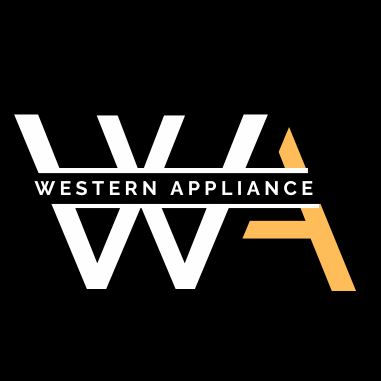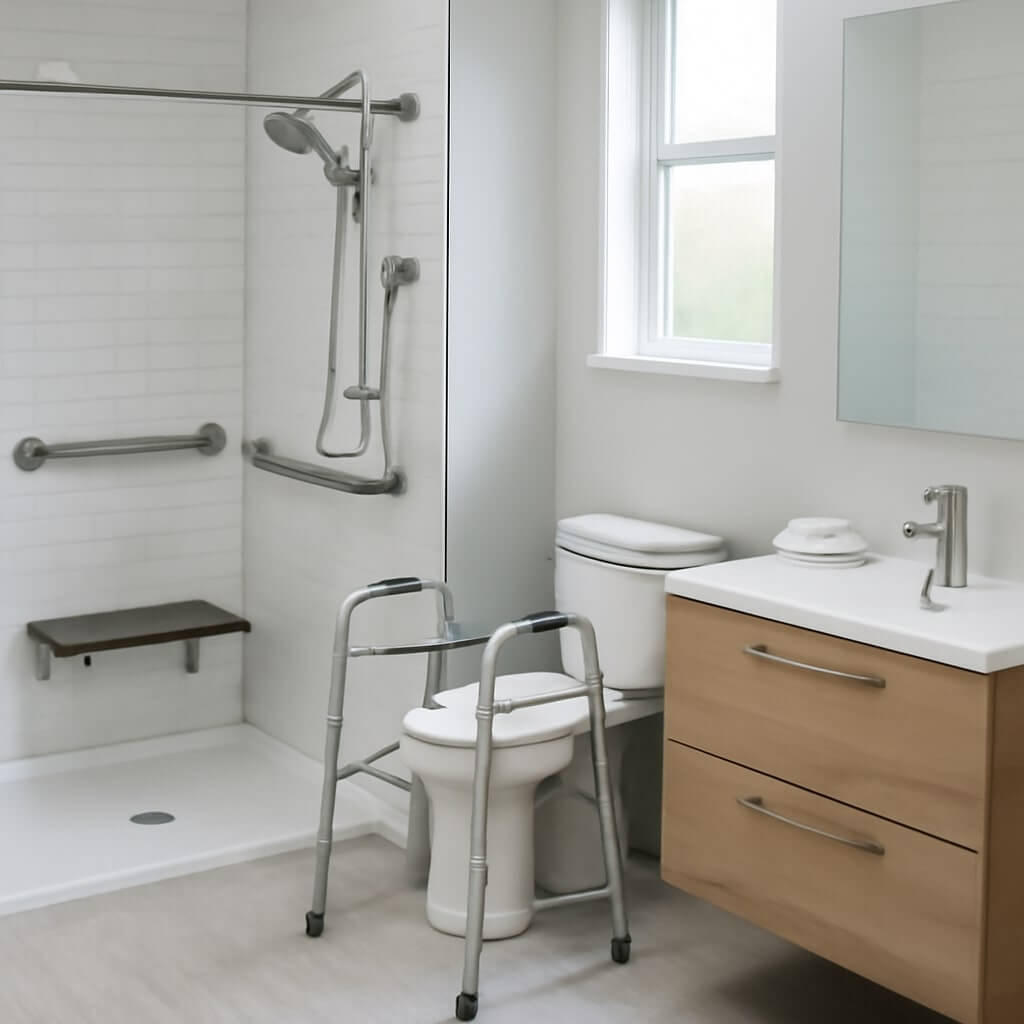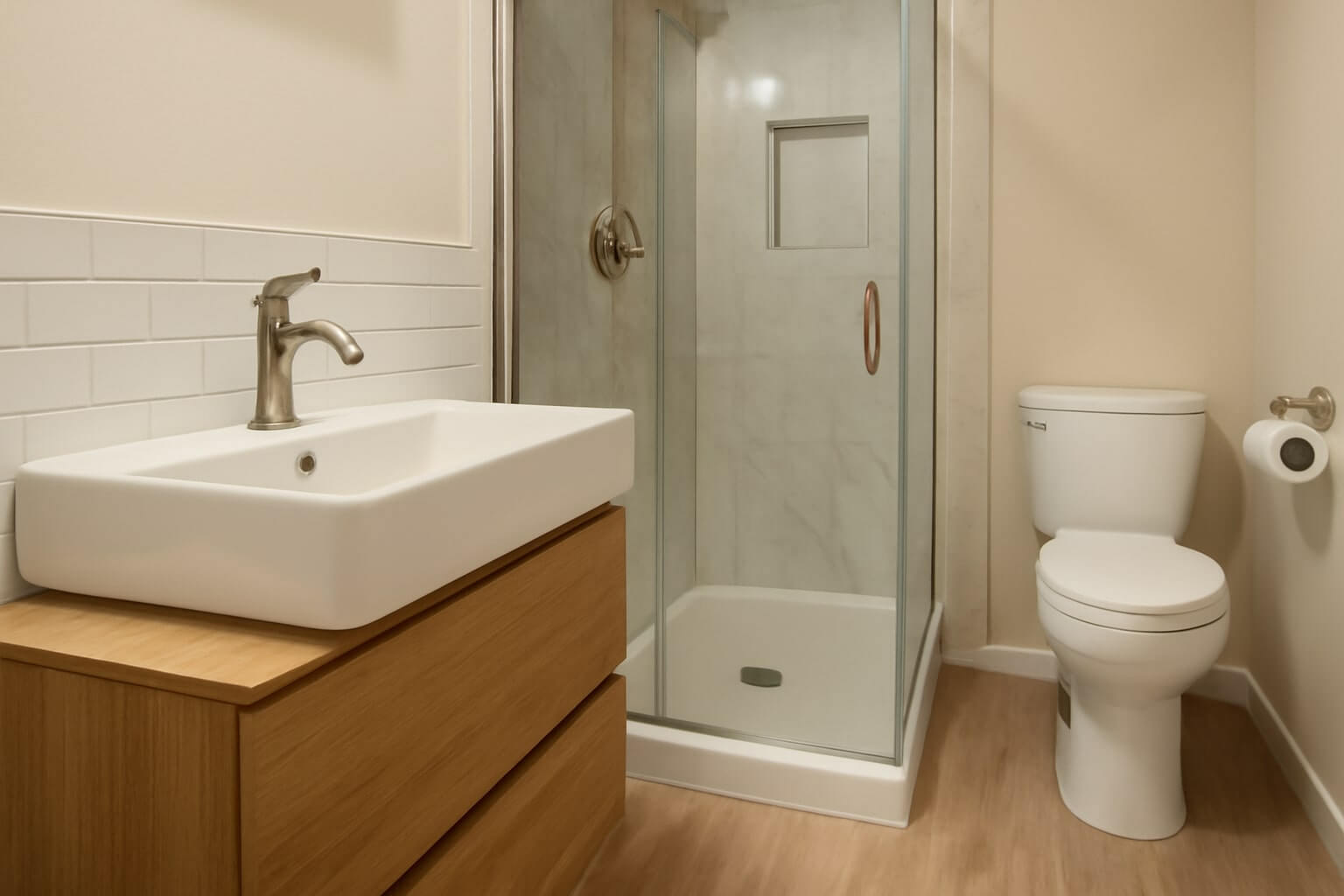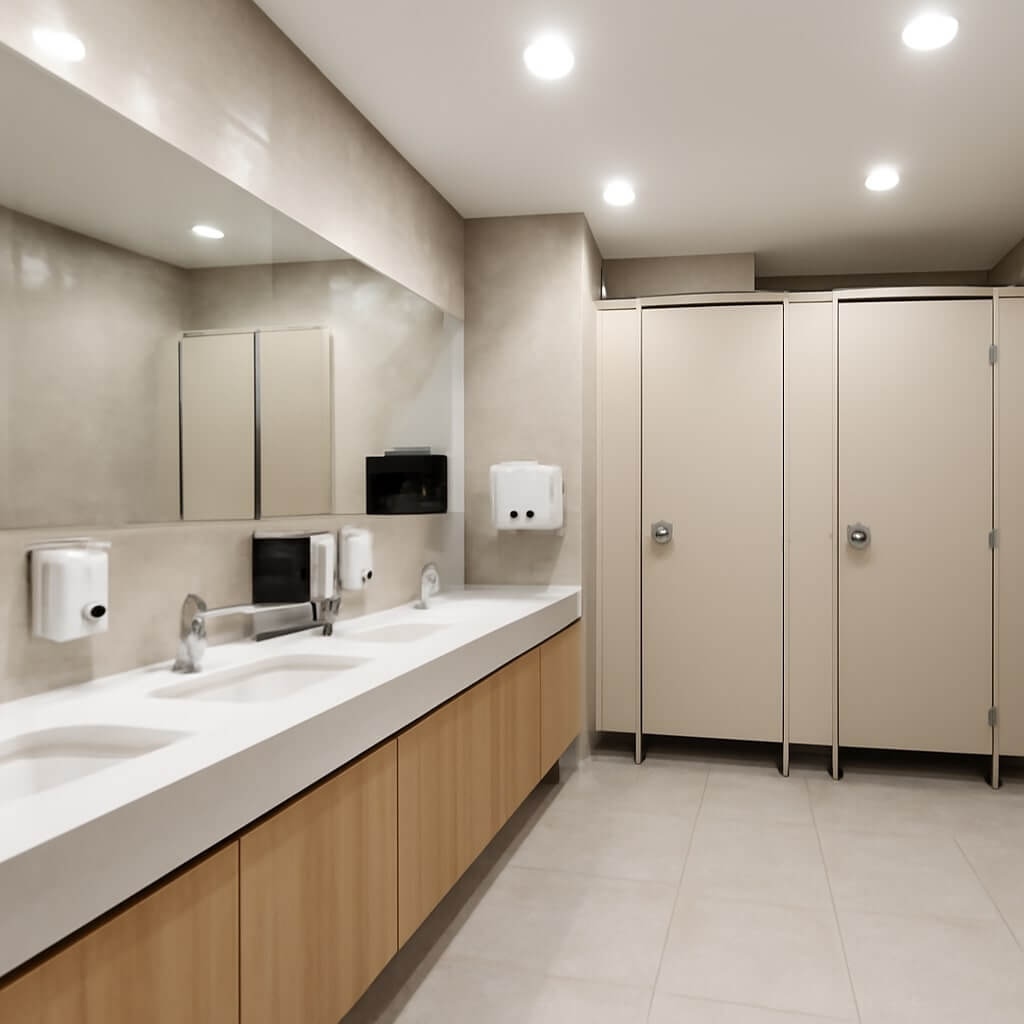If you’re considering a bathroom remodel to improve safety or accessibility, you might wonder if Medicare can help cover the costs. Certain modifications may qualify as medically necessary, but it’s vital to understand the specific criteria and documentation required. From grab bars to walk-in showers, not all renovations will meet Medicare’s standards. To navigate this complex landscape, you’ll need to assess your situation carefully. What modifications really qualify, and how can you guarantee you’re making the right choices?
Key Takeaways
- Medicare may cover bathroom modifications deemed medically necessary to enhance safety and promote independence, such as grab bars and walk-in tubs.
- A healthcare provider’s recommendation is essential for securing coverage; documentation must outline the necessity of each modification.
- Modifications should align with Medicare’s coverage requirements; not all remodeling costs are eligible for reimbursement.
- Keeping detailed receipts and before-and-after photos is crucial for submitting claims and ensuring compliance with Medicare policies.
- Explore financing options like home equity loans, personal loans, or local programs if modifications exceed what Medicare covers.
Understanding Medicare Coverage Basics
When it comes to understanding Medicare coverage, it’s essential to grasp the fundamental components that dictate what services and items are included.
Medicare basics consist of four parts: Part A covers hospital stays, Part B addresses outpatient care, Part C offers Medicare Advantage plans, and Part D focuses on prescription drugs.
Medicare comprises four essential parts: Part A for hospital stays, Part B for outpatient care, Part C for Advantage plans, and Part D for prescriptions.
Each part has specific coverage limits, meaning not everything is covered. For instance, while some medical equipment may be included, modifications to your home, like bathroom renovations, typically aren’t.
Understanding these components helps you navigate your options effectively and guarantees you make informed decisions regarding your health care needs.
What Bathroom Modifications Are Considered Medically Necessary?
How can you determine which bathroom modifications are deemed medically necessary?
Start by evaluating your specific health needs and limitations. Modifications that enhance bathroom safety and promote independence are typically prioritized.
For instance, grab bars, non-slip flooring, and walk-in tubs are essential accessibility features that help prevent falls and accommodate mobility challenges.
If a healthcare provider recommends these changes based on your medical condition, you’ll strengthen your case for Medicare coverage.
Always document the necessity of each modification and how it directly supports your daily living and safety, ensuring you meet the criteria for medical necessity.
Eligibility Criteria for Medicare Coverage
To qualify for Medicare coverage for bathroom modifications, you must meet specific eligibility criteria that demonstrate medical necessity and a direct link to your health conditions.
Generally, Medicare eligibility requires you to be enrolled in Part A and Part B. You’ll need documentation from your healthcare provider outlining your health status and explaining how modifications will improve your safety and independence.
Additionally, the proposed changes must align with coverage requirements set by Medicare, indicating that they’re essential for your daily living.
Guarantee you gather all necessary information to facilitate the approval process for these modifications.
Types of Bathroom Modifications Covered by Medicare
When considering bathroom modifications covered by Medicare, you’ll find that essential safety features like grab bars and walk-in shower conversions are included.
These modifications aim to enhance accessibility and reduce the risk of falls, which is vital for maintaining independence.
Understanding the specifics of what Medicare covers can help you make informed decisions about your bathroom remodel.
Grab Bars Installation
Grab bars are essential safety features that can greatly reduce the risk of falls in the bathroom, a common area for accidents among older adults. Medicare may cover the installation of grab bars, depending on your specific needs. Understanding the different grab bar types and the installation process can help you make informed decisions.
| Grab Bar Type | Description | Medicare Coverage |
|---|---|---|
| Wall-mounted | Fixed support for stability | Often covered |
| Suction cup | Temporary, portable support | Rarely covered |
| Floor-to-ceiling | Maximum stability | Case-by-case basis |
| Folding | Space-saving option | Often covered |
Consider consulting with a healthcare professional for guidance.
Walk-In Shower Conversion
Installing grab bars is just one way to enhance bathroom safety, and converting to a walk-in shower can further improve accessibility for older adults.
Walk-in showers offer numerous benefits, including eliminating the need to step over a bathtub ledge, thereby reducing the risk of falls. They provide a spacious, slip-resistant area that promotes shower safety, making daily routines easier and more secure.
Medicare may cover some costs if your healthcare provider deems the modification medically necessary. By investing in a walk-in shower, you’re not only improving your safety but also enhancing your quality of life at home.
How to Document Your Needs for Coverage
To secure Medicare coverage for your bathroom remodel, you’ll need to gather evidence of medical necessity.
Start by consulting with your healthcare providers, as their documentation will be essential in supporting your case.
Having clear and thorough records can greatly enhance your chances of approval for the modifications you require.
Gather Medical Necessity Evidence
When seeking Medicare coverage for a bathroom remodel, you’ll need to effectively document your medical necessity to support your claim. Evidence gathering is vital, so focus on these key elements:
- Doctor’s Recommendation: Obtain a written statement from your healthcare provider outlining the necessity for modifications.
- Personal Health History: Provide records that detail your medical conditions affecting bathroom use.
- Safety Assessments: Include evaluations from occupational or physical therapists highlighting hazards in your current bathroom.
- Cost Estimates: Present quotes for the remodel that align with the medical necessity, ensuring they reflect reasonable options.
This documentation strengthens your case for coverage.
Consult With Healthcare Providers
Consulting with healthcare providers is essential for effectively documenting your needs for Medicare coverage of a bathroom remodel, as their insights can greatly bolster your claim.
During healthcare consultations, discuss specific challenges you face due to your current bathroom setup. Ask for provider recommendations on necessary modifications that would enhance your safety and mobility.
Make sure your providers detail these needs in written statements, citing medical necessity. Collecting this evidence strengthens your case for coverage and demonstrates the remodel’s importance for your well-being.
Clear documentation from healthcare professionals can considerably influence Medicare’s decision regarding your claim.
Alternative Financial Assistance Options
While Medicare mightn’t cover the costs of a bathroom remodel, several alternative financial assistance options can help ease the financial burden.
Medicare doesn’t cover bathroom remodels, but there are various financial options to ease the costs.
Consider these options:
- Home equity: Tap into your home’s value through a home equity loan or line of credit for remodeling costs.
- Personal loans: Look for low-interest personal loans to finance your renovation without using home equity.
- Crowdfunding platforms: Share your renovation goals on crowdfunding sites to gather support from friends and family.
- State assistance: Investigate local programs that provide financial aid for home modifications aimed at improving accessibility.
The Role of Medicaid in Bathroom Renovations
Although Medicaid primarily focuses on providing health coverage, it can also play an essential role in financing necessary home modifications, including bathroom renovations.
Medicaid coverage may include funds for modifications that enhance bathroom accessibility, such as installing grab bars, widening doorways, or adding roll-in showers. To qualify, you’ll often need a physician’s recommendation, demonstrating that these changes are medically necessary for your well-being.
Check with your state’s Medicaid program, as benefits can vary. By leveraging Medicaid, you can create a safer and more accessible bathroom, ultimately improving your quality of life while managing your healthcare costs effectively.
Tips for Planning Your Bathroom Remodel With Medicare in Mind
When planning your bathroom remodel with Medicare in mind, understanding the limitations and coverage options is crucial for maximizing your benefits.
Here are some tips to take into account:
- Assess bathroom accessibility needs: Identify specific features that enhance safety, like grab bars or non-slip flooring.
- Consult a healthcare professional: Get recommendations for necessary modifications that may qualify for coverage.
- Create a detailed renovation budget: Outline essential vs. optional features to prioritize Medicare-approved improvements.
- Document everything: Keep receipts and photos to support your claims for reimbursement or coverage.
These strategies can help guarantee your remodel aligns with Medicare’s requirements.
Conclusion
In summary, while Medicare can cover certain bathroom remodels aimed at enhancing safety and independence, it’s essential to understand the specific requirements and documentation needed. By identifying medically necessary modifications and consulting with healthcare providers, you can increase your chances of receiving coverage. Additionally, exploring alternative financial assistance options and considering Medicaid can further support your renovation efforts. With careful planning and attention to detail, you can create a safer bathroom while maximizing potential Medicare benefits.




